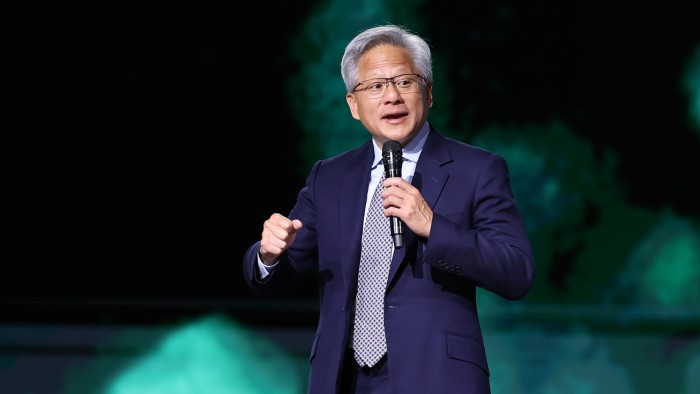Unlock the Editor’s Digest for free
Roula Khalaf, Editor of the FT, selects her favourite stories in this weekly newsletter.
Nvidia is seeking to build a research and development centre in Shanghai that would help the world’s leading maker of artificial intelligence processors stay competitive in China, where its sales have slumped due to tightening US export controls.
Chief executive Jensen Huang discussed the plan with Shanghai’s mayor Gong Zheng when they met in the Chinese city last month, according to two people with knowledge of the matter. Nvidia is leasing a new office space in Shanghai to accommodate existing employees as well as a potential expansion.
According to people with knowledge of the plans, the R&D centre would research the specific demands of Chinese customers and the complex technical requirements needed to satisfy Washington’s curbs.
The actual core design and production will remain overseas however, due to legal sensitivity around transferring intellectual property to China. Nvidia said: “We are not sending any GPU designs to China to be modified to comply with export controls.”
The Shanghai team would also work on global R&D projects including verification of chip designs, optimisation of existing products and sector focus research such as autonomous driving, people with knowledge of the matter said.
Huang also wants to ensure access to top artificial intelligence talent based in China. Nvidia is currently advertising roles based in Shanghai, including engineers to help “guide the development of next-generation deep learning hardware and software”, and “develop and optimise ASIC designs that compete on a global scale”.
The Shanghai government had shown preliminary support for such plans, while Nvidia was lobbying the US administration for approval, said one of the people. The Silicon Valley company has about 2,000 employees in the Chinese city, mostly in sales and related support functions.
Nvidia is expanding its research footprint in China as it seeks to maintain a leadership position in one of its largest overseas markets, where it fears local competitors led by Huawei could take over by offering a rival AI ecosystem.
While China accounted for about 14 per cent of Nvidia’s revenues last year, at about $17bn, Huang has estimated it could be a $50bn market in a couple of years.
“We want to build the world’s AI [where] American standards are being adopted around the world,” Huang said last week at a Milken Institute event. “If we leave a market altogether, there’s no question somebody else would step in. Huawei, for example, is very formidable . . . they’ll step in.”
The Trump administration issued a warning this week to American and foreign companies around the world that the use of AI chips manufactured by Huawei could trigger criminal penalties for violating US export controls.
Huang flew to Beijing to meet Chinese vice-premier He Lifeng on April 17, days after new export restrictions were imposed on Nvidia’s H20 chip, a watered-down model that had already been redesigned to comply with Biden-era controls limiting sales to China.
Given the restrictions on its best-selling chips in China, Nvidia is offering L20 processors — lower-end chips without high-bandwidth memory and with less computing power — to Chinese clients as an alternative, according to people with knowledge of the matter.
Tech giants are understood to be hesitant to put in orders because the processors cannot compete with rival Chinese products on performance.
“We are in an awkward situation where we either choose a worse Nvidia chip that runs on [its software system] Cuda, which means lower operational cost, or switch to Chinese chips altogether and live through the pain of switching systems,” said one executive at a leading Chinese tech firm.
Clients led by ByteDance, Alibaba and Tencent are monitoring geopolitical developments to evaluate whether Nvidia could offer a redesigned high-end chip to meet their needs. While Nvidia was exploring various options, there were no finalised plans because of legal uncertainty, the people said.
Source link









